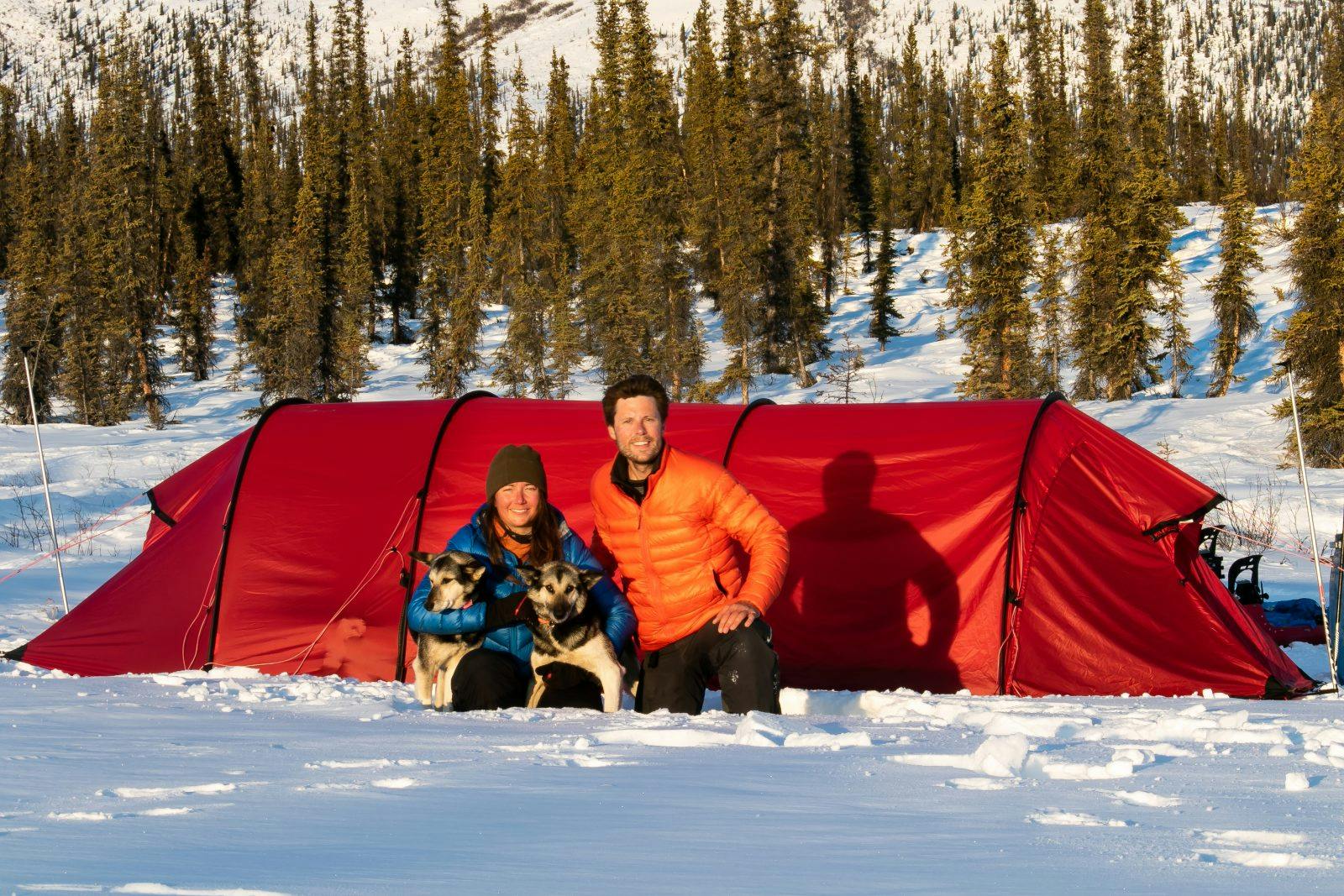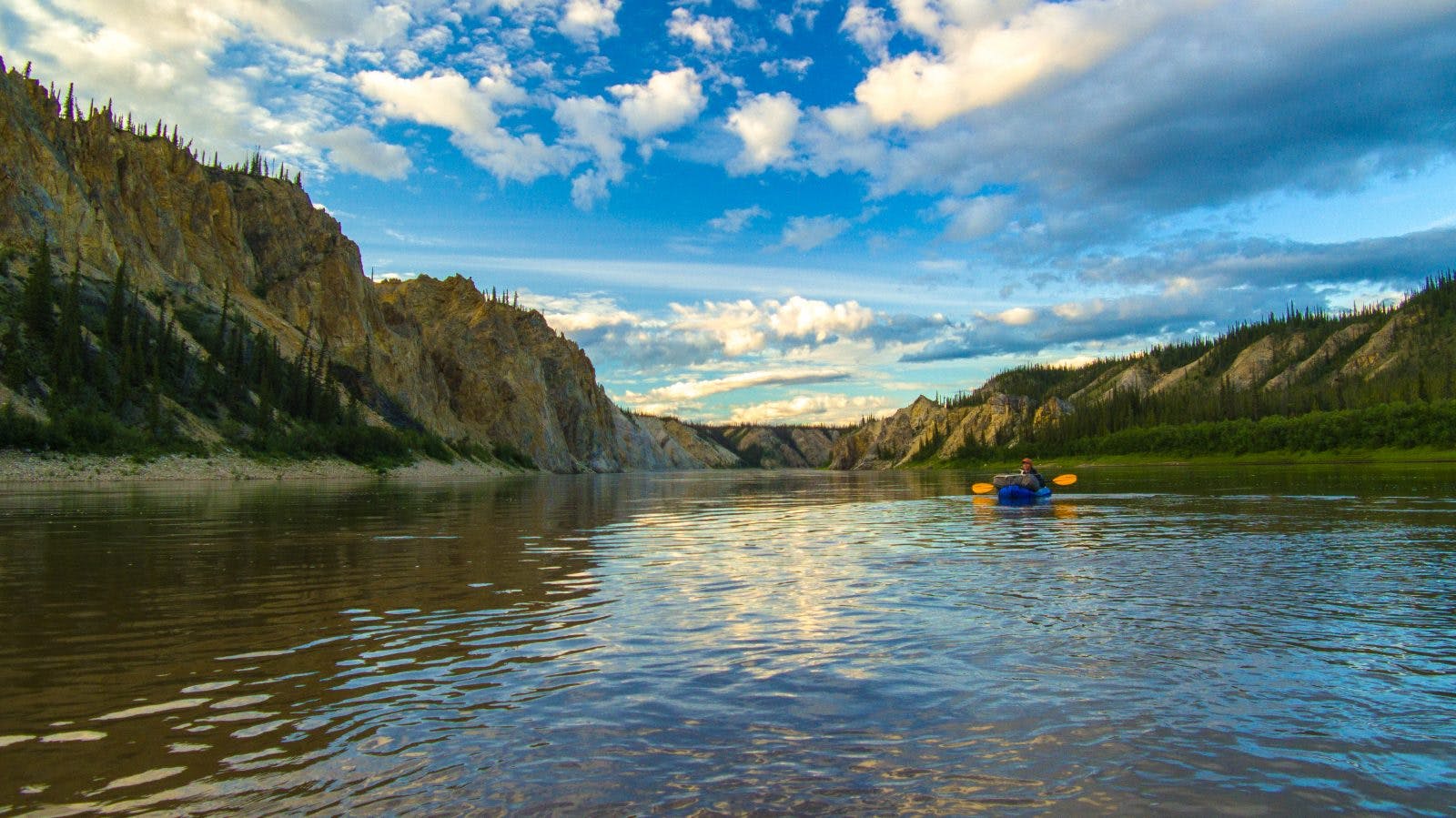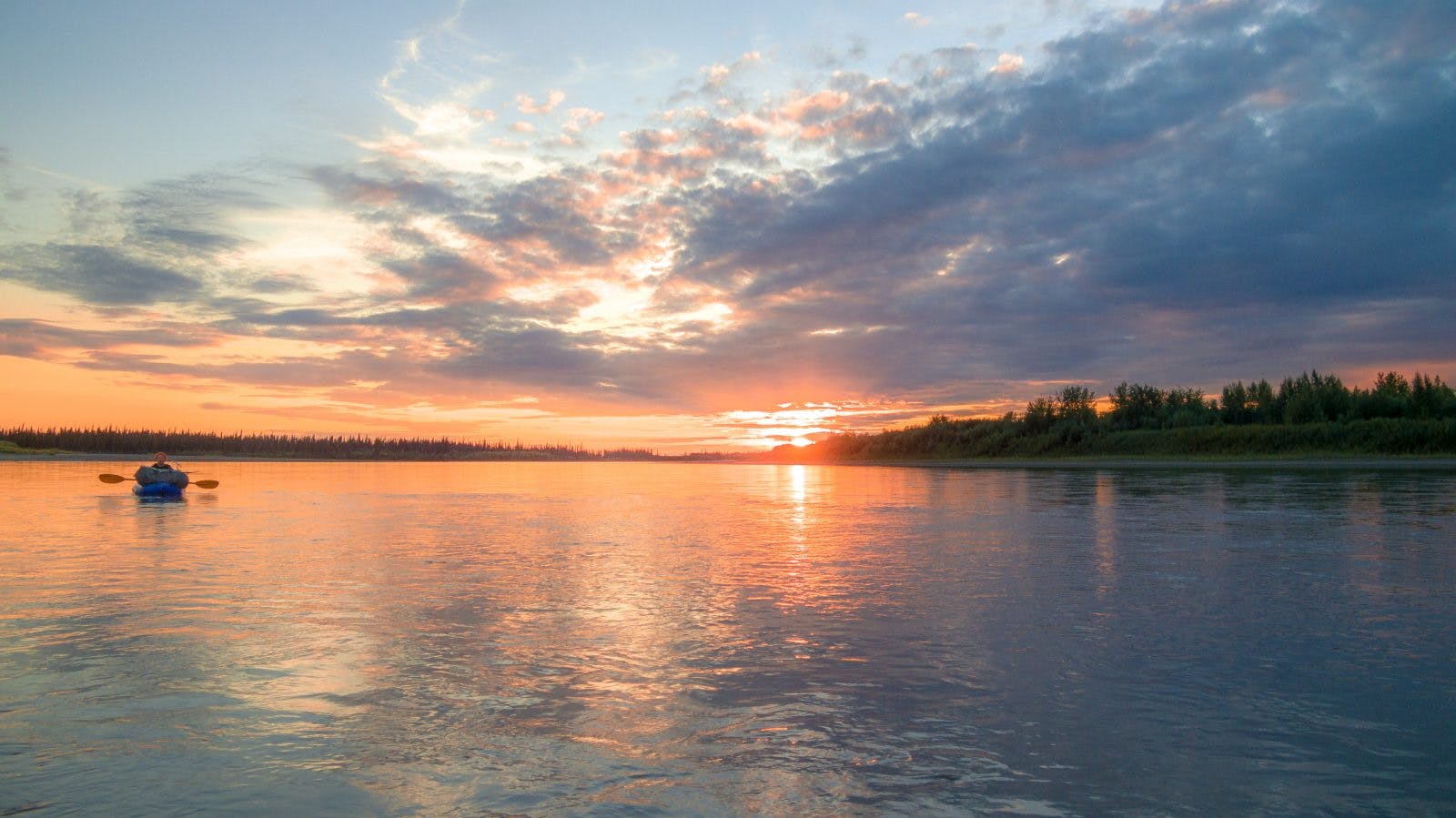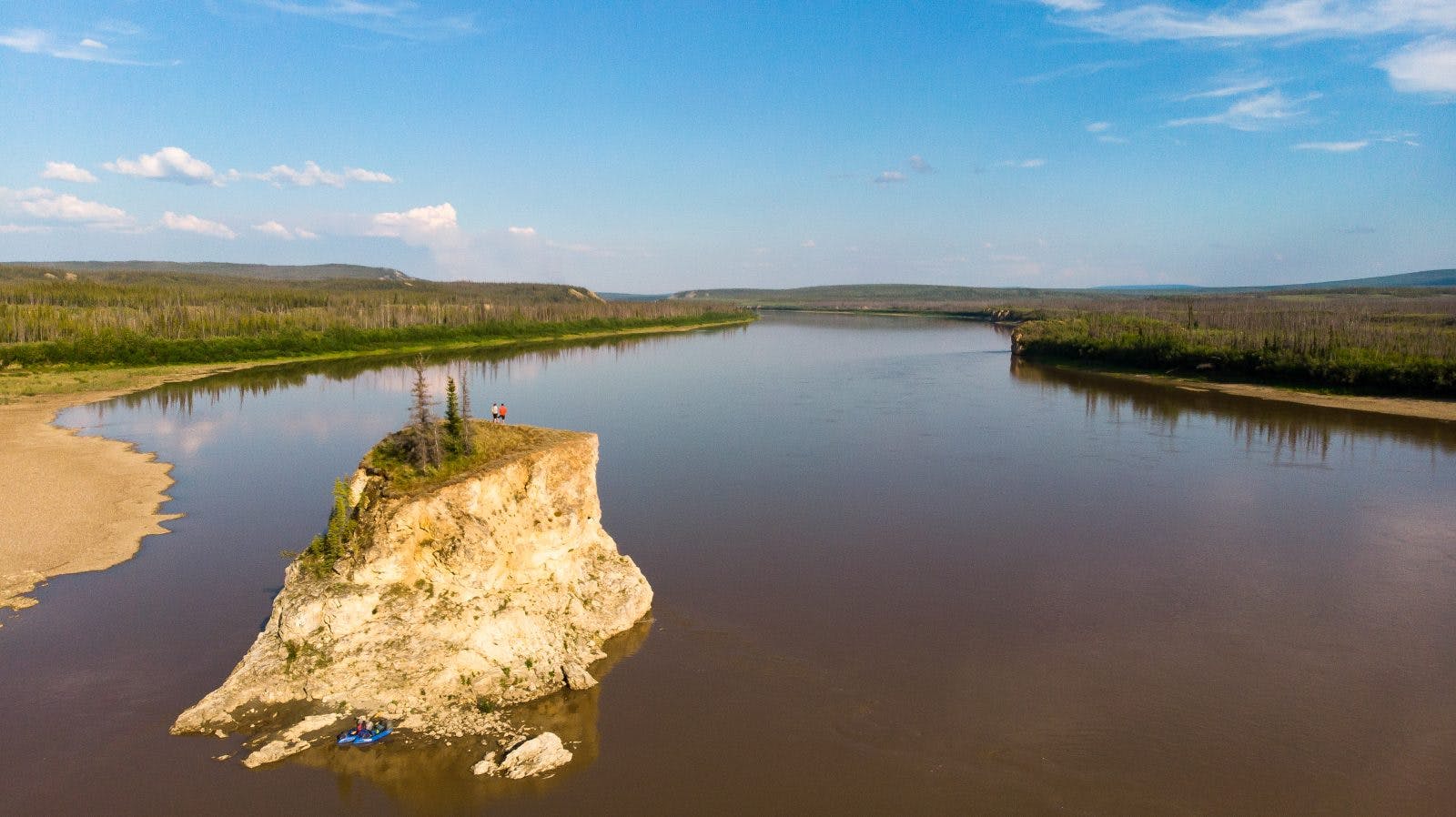The Sacred Place Where Life Begins—A Documentary to Protect the Arctic Refuge
Arctic Refuge Activism: A Q&A with Kristin Gates and Jeremy La Zelle, Producers of the Documentary: “The Sacred Place Where Life Begins”
Finding the Refuge
Tell us about your first experience in the Arctic Refuge. When and where did you travel?
Kristin Gates: Out of college, I moved to Coldfoot, Ala., for a job working as a river guide. I lived just west of the Arctic National Wildlife Refuge and went for a few short hikes across the boundary. The Brooks Range immediately had my jaw on the floor. Endless mountains. No roads. No trails. No fences. It is heaven. You can walk for weeks on end without even seeing a human footprint.
I couldn’t get enough of it, so I decided to walk across the range from the Canadian border to the Chukchi Sea. I mapped out a route, and it ended up being about 700 miles of bushwhacking interspersed with 300 miles of packrafting. The route took me right across the Arctic Refuge.
I ran into a corner of the Porcupine Caribou herd migration. It was a late winter, so the caribou were still in the mountains. I would come over a pass and see hundreds of caribou in the next valley. I’d walk on their game trails that they’ve been wearing down for thousands of years. It was the holiest experience I’d ever had. My walk up there took years to sink in and it has continued to shape me and my decisions years later.
Jeremy La Zelle: This was my first experience in the Arctic Refuge. Back in 2012, I worked in Alaska producing and directing a TV Show for Animal Planet, which was mostly shot in Fairbanks and north of Nome above the Arctic Circle. So, I had some experience living in the subzero temps of this part of the world, but the Arctic Refuge proved a real test.
As a child, I learned about the Arctic Refuge, which always seemed on the precipice of becoming a massive oil field. I always considered this an important issue that deserved a high level of activism to prevent resource development.
Kristin and I knew, however, we had to really experience this land in the late winter, spring and summer months to truly understand why it must be protected. Being in the freezing environment, surviving, filming the incredible wildlife, meeting with the Gwich’in Nation, learning from them, and finding ways to assist the Gwich’in in the fight to Protect the Arctic Refuge… this was an opportunity to hopefully make a difference.

The Importance of the Arctic
Why is the Arctic Refuge an important place to you both?
KG: As a long-distance hiker, I’ve been lucky to have seen most of the wilderness areas in our country on foot. Still ecologically intact, humanity and nature can still coexist in the Arctic National Wildlife Refuge because the Gwich’in have treated their land with such care and respect for centuries.
There is balance, and it is powerful. The Arctic Refuge is important to me because I have seen how rare places like this are. Protecting the Refuge has become even more important to me as I have learned how the Gwich’in people, the Porcupine Caribou herd, polar bear, and migrating birds depend on this land.
What is one major thing you would be disappointed to see changed in the Arctic Refuge if oil and gas extraction was to open in the Coastal Plains?
KG: The coastal plain has some of the most important habitat in Alaska’s Arctic. Every year 40,000 caribou calves are born here. Every year over 200 species of birds from all over the country and all over the world stop here during their migration. And every year the coastal plain of the Refuge continues to be the thickest polar bear denning site in Alaska.
If oil and gas extraction occur up here, I am terrified to see how this would impact the animals who absolutely need this place to thrive and survive. Barren ground caribou across the world are declining and wildlife biologists are increasingly convinced that the alarming drop in animals is due not to climate change but to development. If the Arctic Refuge is opened to development, habitats will be lost.
JLZ: The Arctic Refuge can be the most silent, peaceful location on Earth. Sometimes we’d just stop trekking and stand peering around the mountain passes in complete awe of just how silent this land can be. It’s magical. Yet, this might change with development, never again to be the same.
My first thought is the sheer size of the scene unfolding: more than five-hundred resource development personnel, the staggering amount of heavy machinery involved, construction of extensive ice roads, a massive ice airstrip, powerful seismic testing that can damage the landscape, continual drilling, the potential oil spills.

Meeting The Gwich’in
You’ve mentioned that your focus for this project is giving a bigger voice to the Gwich’in people of the Arctic. What is one story that resonated most with you when visiting and talking with people who call this place home?
JLZ: For the Gwich’in Nation, there seems to be a common thread through their individual stories on how they fell in love with the Arctic Refuge. Most will say that just living on the land, surviving, respecting the Caribou and the fish in the rivers, have all shaped them to truly value Mother Earth.
Everything they do is to keep the land in perfect condition. They always say, “What we do today is for those seven generations from now.” Looking ahead seven generations into the future is exactly the forward-thinking mindset that has helped keep the Refuge what it is today.

Packrafts & The Project
How did you use packrafts as part of your project?
JLZ: This adventure was super remote, and packrafts allowed us to visit the Gwich’in Nation village of Old Crow and Fort Yukon by river. Navigating the tributaries of the Yukon River is certainly challenging and requires a good map and use of a compass.
Not much information is available on these ever-changing river systems. It’s very easy to quickly get lost out there and the chances of rescue are minimal at best. So, it’s just smart thinking to have a packraft that enables mobility and more opportunities for a successful expedition.
We absolutely love Alpacka packrafts. They certainly held up to the test of being utilized in extreme situations… heavy loads, cold weather, rainstorms, sandstorms, strong river currents, and destructive gravel bars. Without our packrafts we couldn’t have accomplished what we set out to do in the Arctic Refuge.
What was the most challenging part of completing your film about the Arctic Refuge and the Gwich’in people?
JLZ: [Laughing] All the expeditions we put ourselves through in the Arctic Refuge were all very demanding on mind, body, and soul. Living within -25°F temps in the Arctic Refuge makes everything more challenging. Snowshoeing on the Arctic Ocean in extreme late winter storms is certainly tough. Packrafting against strong headwinds within powerful Arctic summer storms on big, slow-moving rivers is very exhausting. And doing this all while filming and attempting to create a compelling story for the Gwich’in Nation and the Arctic ecosystem really tested our resolve.
Now, the real challenge is figuringout where we go from here. Have we created an impactful film for the Gwich’inNation? Will audiences be emotionally connected to the people and theenvironment, or are we just preaching to the choir? Will those in favor ofresource development watch our media and be moved to make a positive change? Weare really hoping to connect with these individuals and corporations. We wantto have a meaningful conversation with them and do hope our media opens up thispossibility. The greatest challenge is still ahead of us.

What’s Next?
So, what’s next for you both? What’s next for the project?
KG: Right now, we are still working hard to get media out to advocate for the protection of the Refuge and we will be heading back north to film if seismic testing does occur. We are creating edits for free for any organization that will promote protecting the Refuge. We are giving presentations around the country about the Arctic Refuge and sharing our film at film festivals around the world.
Just this week, we gave presentations for the Audubon Society, the World Affairs Council, the Natural Resource Council of Maine, and Casco Bay High School. Our film is also being shared at the Climate Climb Event in Stockholm and the Polar Film Festival in New York. All our efforts are geared towards protecting the Refuge and raising awareness and we will continue doing everything we can to help our Gwich’in friends in 2019.
If readers are interested in getting involved with the action happening for the Refuge, what would your advice be?
KG: Please get involved The Refuge needs your voice! I would recommend signing up for email alerts from the Sierra Club or Audubon Society, which will let you know about the issues to act on and the best way forward. Tell your friends. Tell your family. Share information on social media. Write letters to editors and politicians. Learn about the Gwich’in people.
Stay Informed & Involved!
- Listen to Gwich’in voices through Gwich’in Steering Committee
- Visit “The Sacred Place Where Life Begins.” for more information on Kristin and Jeremy’s documentary work.
- Check out the Alaska Wilderness League’s website. They have a great platform for submitting your comments on the Refuge.
- Visit the Trustees for Alaska website, a non-profit environmental law group.
- The Coastal Plain oil and gas leasing program EIS (Environmental Impact Statement) is currently live. The comment period ends on March 13th, so please act now by visiting the Bureau of Land Management’s website!
If you would like to support Kristin and Jeremy’ work, please visit their “Expedition Arctic Refuge” GoFundMe page.


